Hello, hello, and welcome back to part two of our first week at Yellowstone National Park! If you missed it, you can find part one right here.
I'm picking up right where we left off — let’s jump in!
Thursday: Norris Geyser Basin
Norris Geyser Basin sounded really cool and we just had to go!
Norris Geyser Basin is the hottest, oldest, and most dynamic of Yellowstone's thermal areas. The highest temperature yet recorded in any geothermal area in Yellowstone was measured in a scientific drill hole at Norris: 459°F (237°C) just 1,087 feet (326 meters) below the surface! There are very few thermal features at Norris under the boiling point (199°F at this elevation).
Wow! We woke up at 5:30 am so we could get there and find a parking spot. This time we learned our lesson from earlier in the week at Mammoth Hot Springs and made breakfast right in the parking lot — didn’t want to be hungry again/keep our energy up. I’m so glad we did because we saw so many cool sights!
Porcelain Basin
We started out on the Porcelain Basin side. There were so many milky blue and turquoise pools — just look at those colors compared to the stormy sky:
We learned the colors are caused by bacteria and algae that together make a living thermometer — how cool hot is that?
Just look at these colors! Unreal.
Back Basin
Then it was over to the Back Basin. The most famous geyser here is the unpredictable Steamboat Geyser — the last time it erupted was in April. We saw a few spurts of water and lots of steam so we hung around for a bit hoping that we’d get lucky…
…and we DID get lucky! But not from Steamboat erupting…
A bison suddenly appeared out of nowhere!
This is the closest we’ve ever been to one that wasn’t fenced in. They are BIG y’all! Way bigger than you’d think! Here’s a zoomed in photo:
It’s amazing how quiet they can be. I think Steamboat Geyser also muted his approach.
Note: all photos were zoomed in/taken from a safe distance. Jason had to warn people who started walking towards the bison to say back.
They can move fast, too — up to 35-40 miles per hour.
We watched Mr. Bison for a while and then left him in peace. What an experience!
Then I took a gazllion photos of Emerald Spring — just couldn’t get enough of that color.
Cistern Spring was also an amazing color — and also super hard to capture:
Gotta get back to Norris Geyser Basin someday when it’s not rainy — but wouldn’t have traded today for anything.
Thursday: Mud Volcano Area
Our next stop was the Mud Volcano Area, where we we saw mudpots — and more bison!
An early visitor described the Mud Volcano as a “most repulsive and terrifying site” — but we totally disagree! We thought it was super cool — picture a cave with waves of water and mud, belching sulphurous steam.
Then we rounded a corner and saw…more bison!
First there was this guy, regally chewing grass:
Then we rounded a corner and saw two bison friends having a spa day:
As someone who loves the smell of sulphur, this would be heaven for me! (And yeah, I like the smell of skunks, too lol!)
A silvery lupine (Lupinus argenteus) glowing in the light stopped me in my tracks:
Thursday: Yellowstone Lake
Our next stop was Yellowstone Lake — where we saw more silvery lupines along the shore:
Some facts about Yellowstone Lake from the park website:
Situated at 7,733 feet (2,357 m) above sea level, Yellowstone Lake is the largest high elevation lake (above 7,000 feet / 2,134 m) in North America. It is roughly 20 miles (32.2 km) long and 14 miles (22.5 km) wide, with 141 miles (227 km) of shoreline and a surface area of 132 square miles (342 km2). Yellowstone Lake freezes over completely every winter in late December or early January, with ice thicknesses varying from a few inches to more than two feet. The lake usually thaws in late May or early June. Yellowstone Lake remains cold year-round, with an average water temperature of 41°F (5°C). Because of the extremely cold water, swimming is not recommended. Survival time is estimated to be only 20 to 30 minutes in water at this temperature.
We can confirm it is cold!
We watched the waves for awhile — so relaxing.
Thursday: Yoga Fox!
It started raining on our way back to camp, and we were thankful we had the van again. As we pulled into the campground we had one more wildlife sighting for the day — I’m calling her Yoga Fox:
She did a bunch of stretches and then curled up to wait out the rain. So cute!
We got back to camp by 8:30 — the first time we got back before 10 pm!
Friday: Rest Day
Friday was the Fourth of July and we figured the crowds would be absolutely crazy in the park. So we decided to sleep in and take a rest day. We really needed that!
Saturday: Hiking Bighorn Pass Trail
Saturday was our last full day at Indian Creek Campground, so we decided to hike the Bighorn Pass Trail right from camp. We loaded up our packs with plenty of water and snacks, rain jackets, clipped on our bear spray, and headed out.
Our first stop was Obsidian Creek at the entrance to the campground — so beautiful!
Then it was on to the trail. I took a bunch of photos so that I could share what it was like hiking under that big sky with the smell of sage in the air.
Wildflowers were blooming everywhere, including what we’re guessing is giant red paintbrush (Castilleja miniata):
And shrubby cinquefoil (Dasiphora fruticosa):
The colors of the subalpine larkspur (Delphinium barbeyi) were stunning:
There were mountain views in every direction.
The light kept changing and we kept a close eye on those clouds.
We stopped for a snack on a log and I just had to do a quick sketch — just had to be done!
It felt so good to get this magical place in my brush. Since many of you asked when I posted a video of this sketch over on Instagram I thought I’d share my sketch setup:
A Stillman & Birn Beta sketchbook — 3.5x5.5”. I always have one in my day pack — and I love putting park stickers on the front!
An Art Toolkit Pocket Palette I put together for the Grand Tetons/Yellowstone. (Note: it’s from a collaboration with Art Toolkit x Art of Soil that I switched up.) Here’s a list of paints in the palette, all Daniel Smith unless specified. H = Holbein, WN = Winsor & Newton.
Top row: Chinese white, azo yellow, quinacridone magenta (WN), smalt (WN), cerulean blue (H), chromium green oxide, deep scarlet
Second row: raw umber (WN), new gamboge, organic vermillion, ultramarine blue, peacock (H), phthalo green, blue shade, bloodstone genuine
Third row: 3 small mixing pans that I use for greens, blues and grays, plus transparent red oxide and indigo
I’m honored to be a Brand Ambassador for Art Toolkit — I've been using their palettes since 2018 and I absolutely love them. They’ve generously given me a code to share with you — use code LISAFAN10 for 10% off your purchase of an ArtToolkit, palette, or mixing pans.
Now back to the hike!
It was so peaceful watching the light play on the mountains.
We turned around at Indian Creek since the water was cold and there wasn’t a good place to cross — we didn’t want to get our feet wet, ha!
I’m glad we turned around when we did, because the weather turned in an instant and it started raining.
There was still blue sky back towards camp so we picked up the pace!
But then we came to a halt when I smelled elk! We scanned around and found them in the treeline across the meadow from us — we watched them for a bit while they watched us. Then they started munching again.
It stopped raining, and then we had to stop again ourselves when I spied a piece of obsidian glistening a few feet from the trail.
We think it was a worked piece — maybe a tool?
It started raining harder again — but luckily we made it back to the van before it really started pouring — and hailing!
What an awesome hike! Felt so good to get away from the crowds and have a slice of Yellowstone all to ourselves for a while.
That’s a Wrap!
That’s a wrap for week 57! What a week it was!
We’re here at Yellowstone for one more week, staying at Lewis Lake and Slough Creek Campgrounds — can’t wait to see what we get into next.
Thanks so much for following along on our adVANtures! — Lisa, Jason, and Walter-the-Van




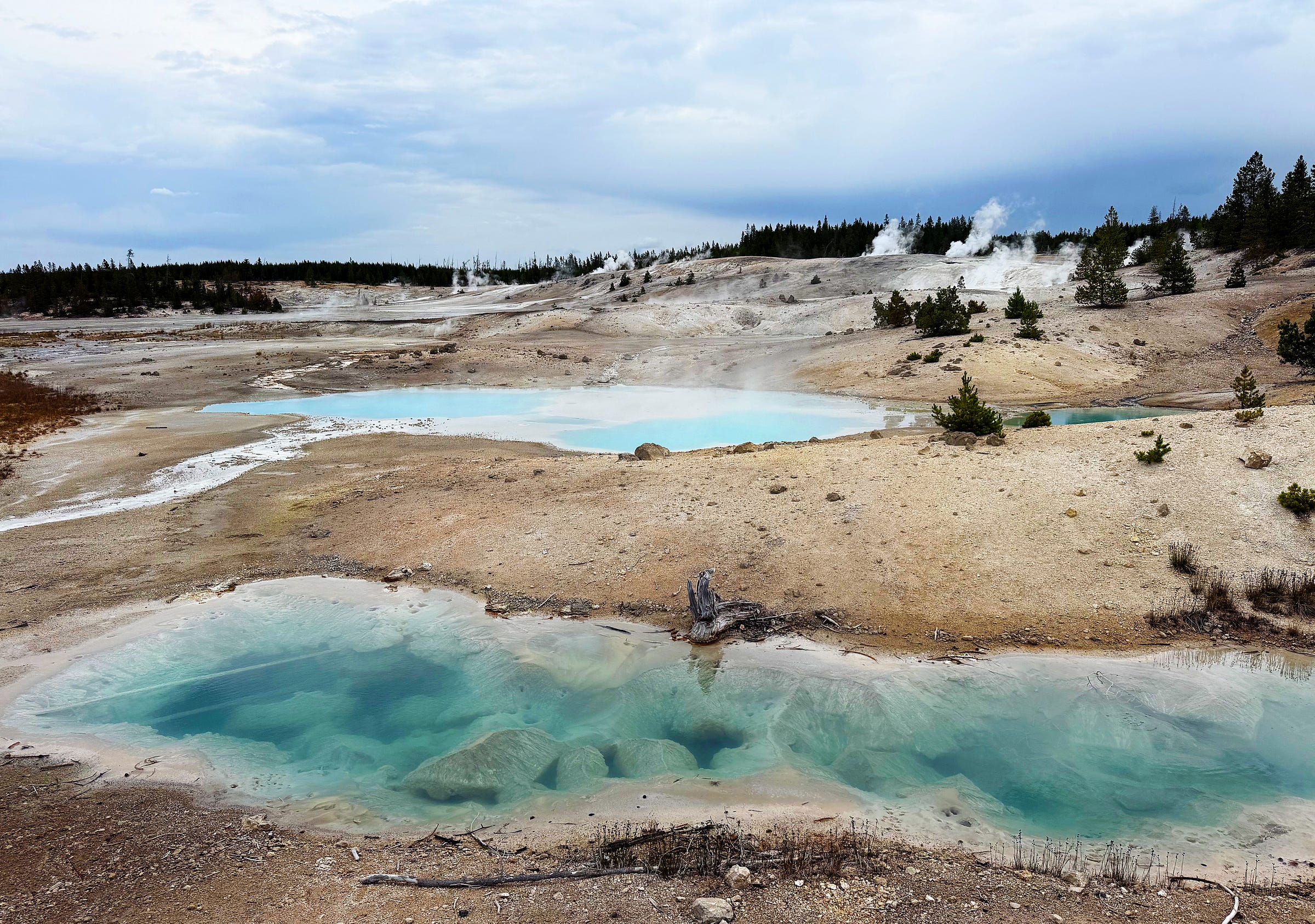
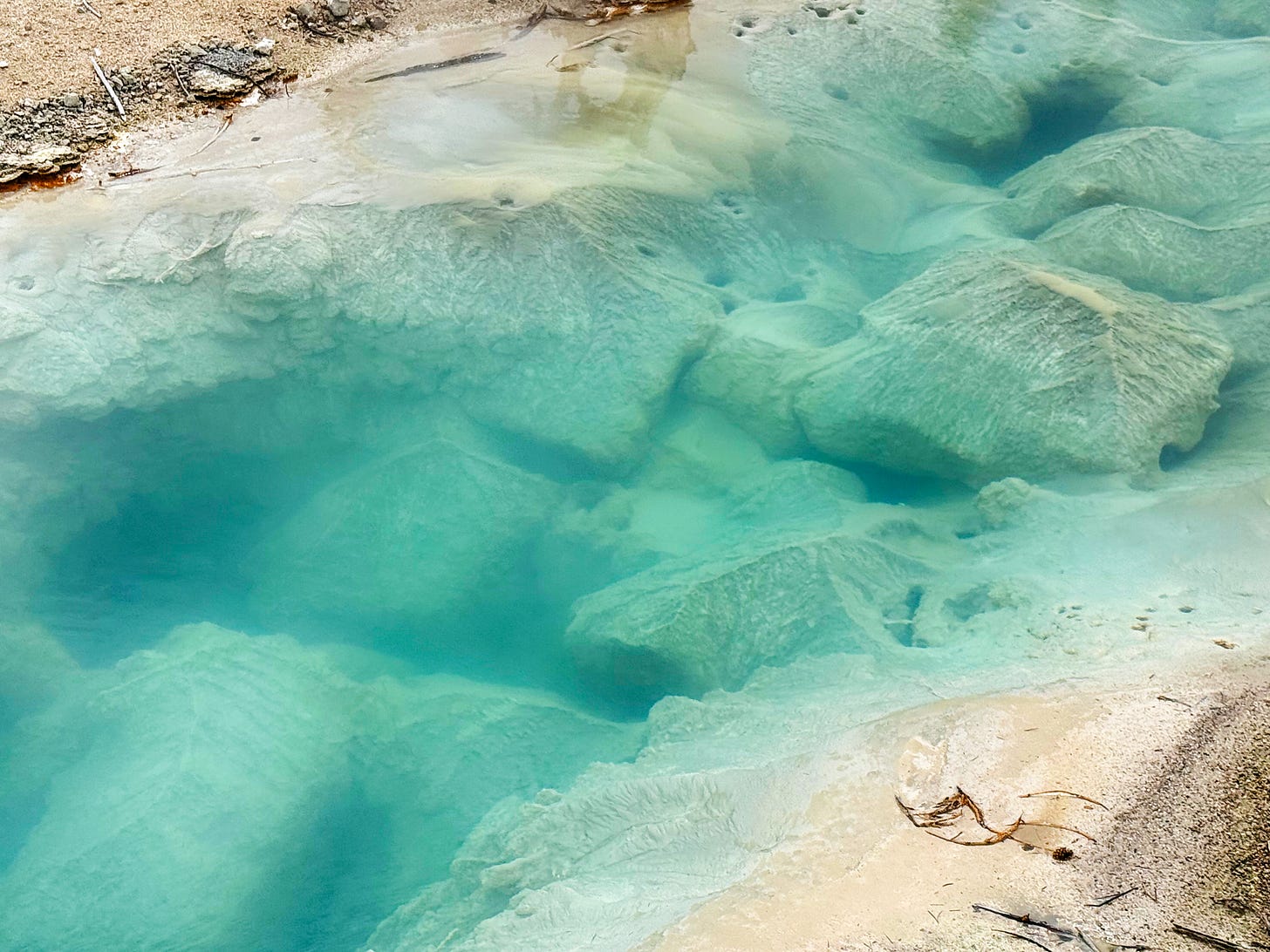


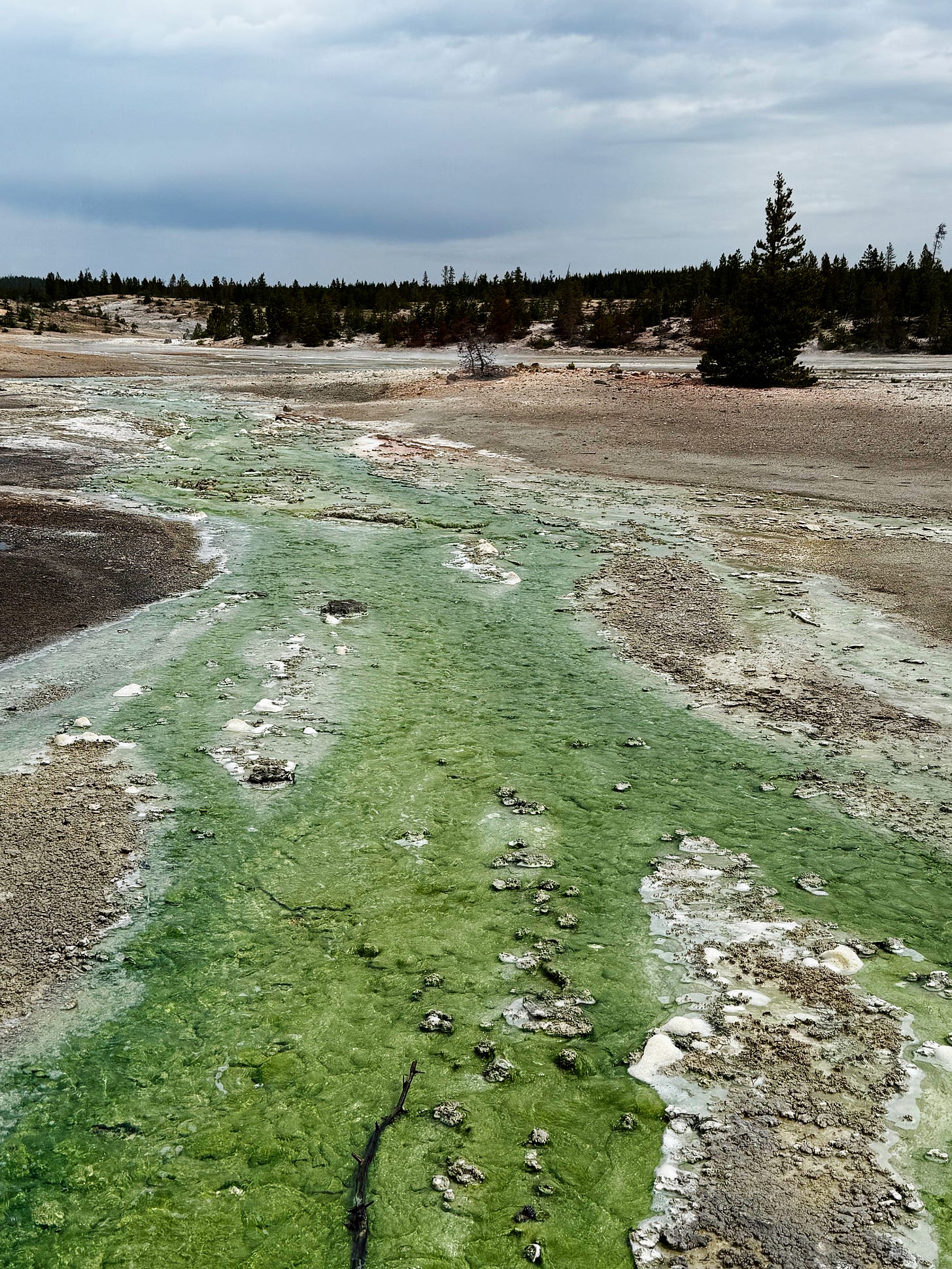


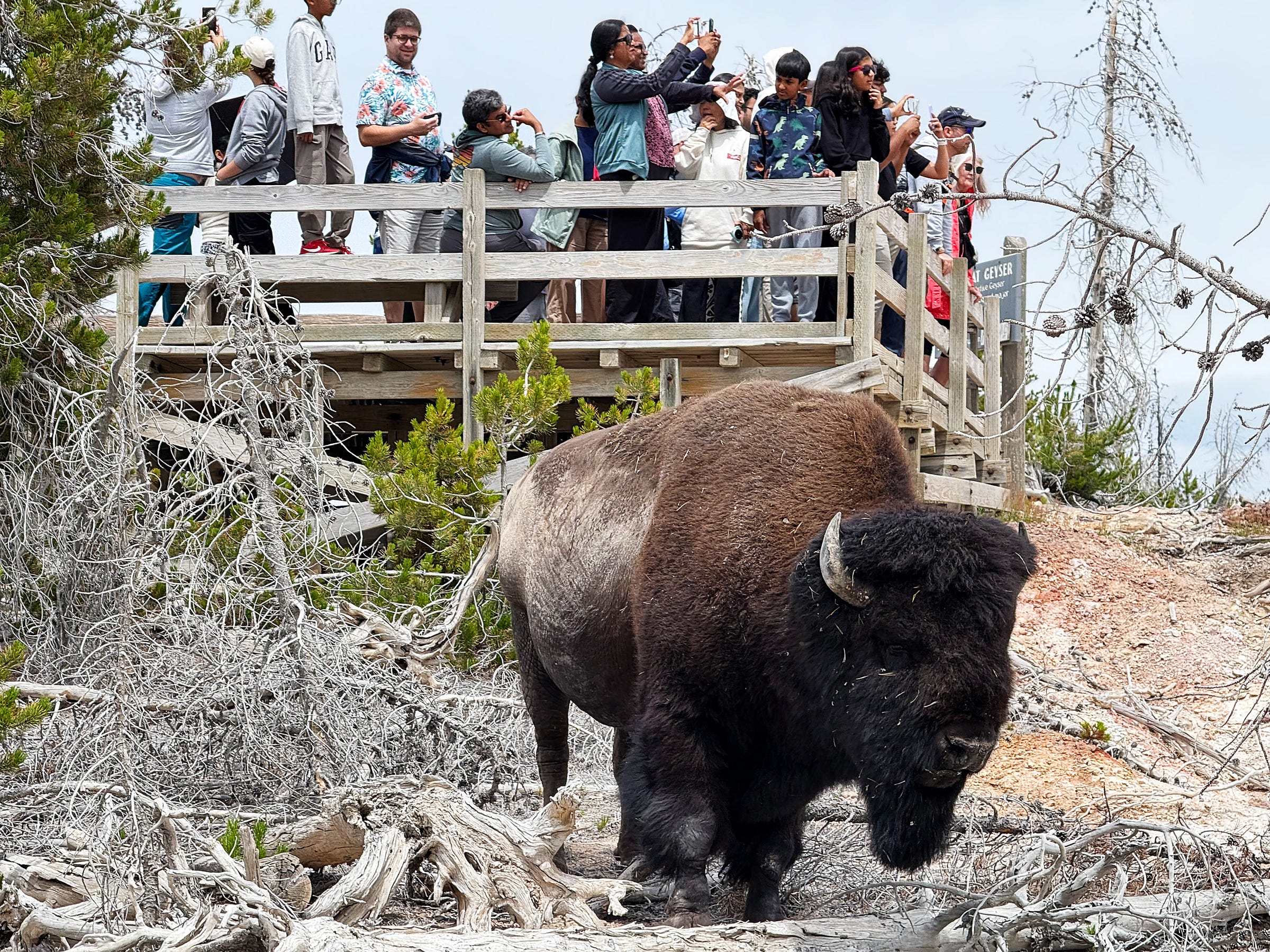
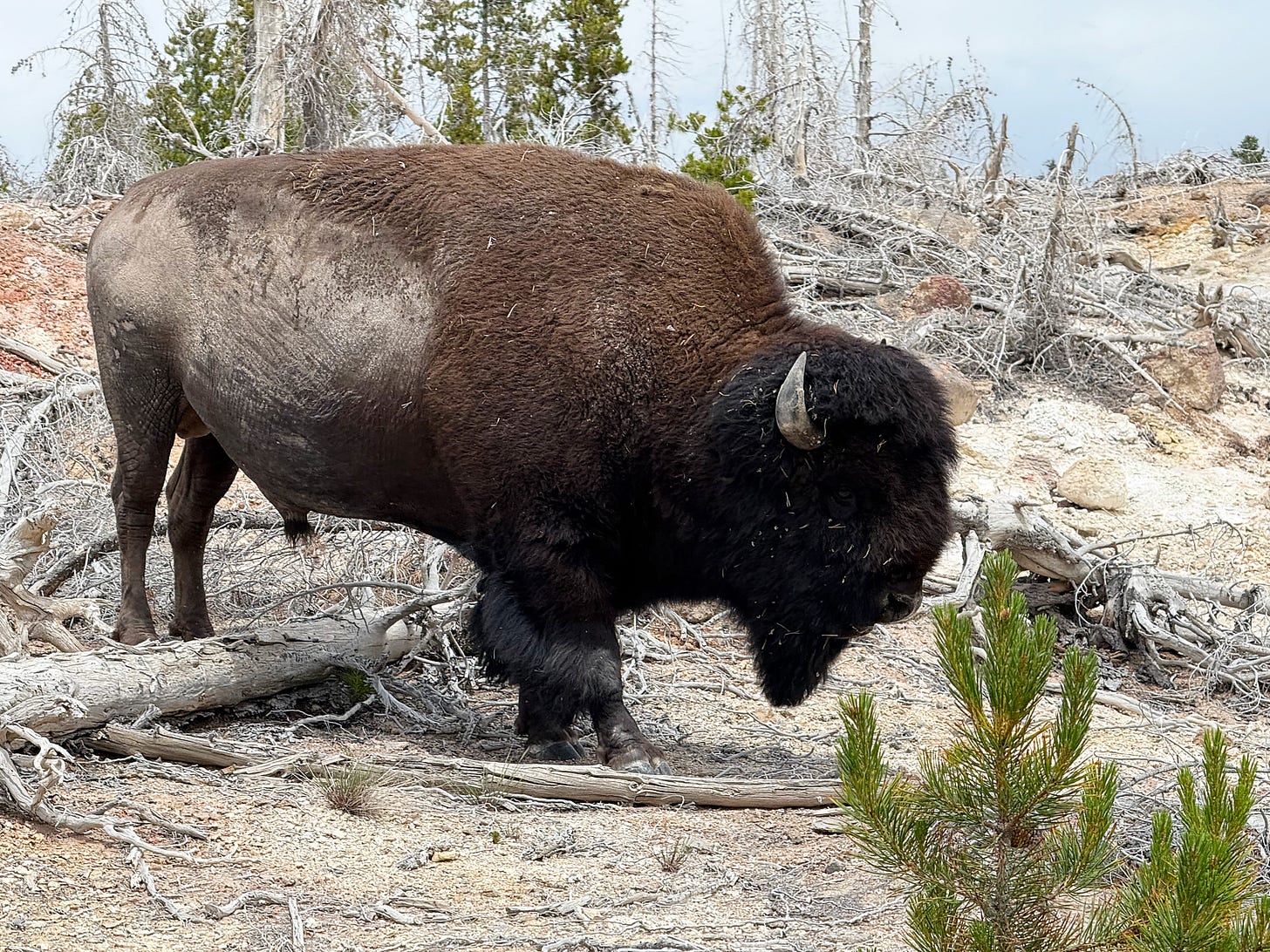
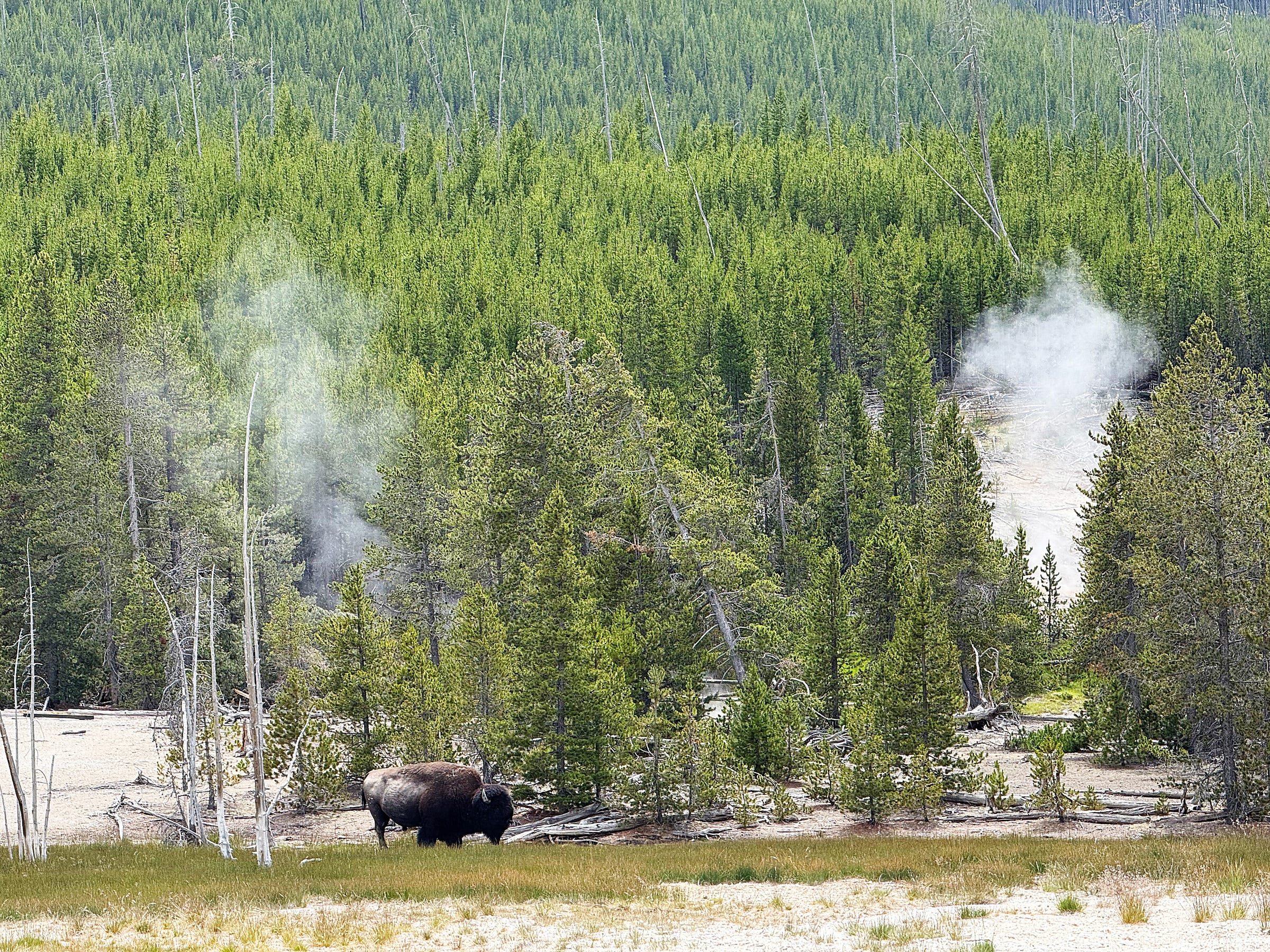
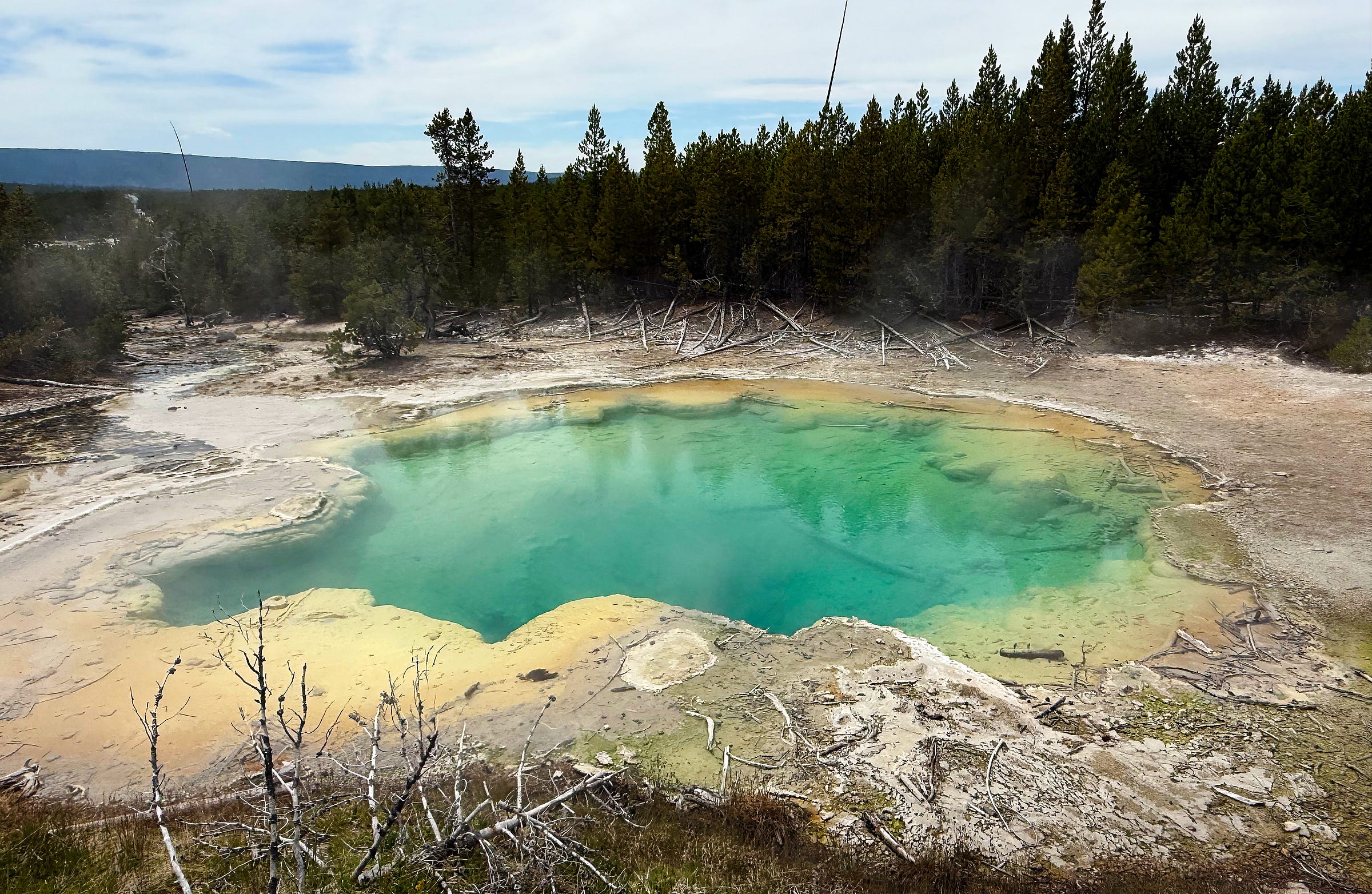
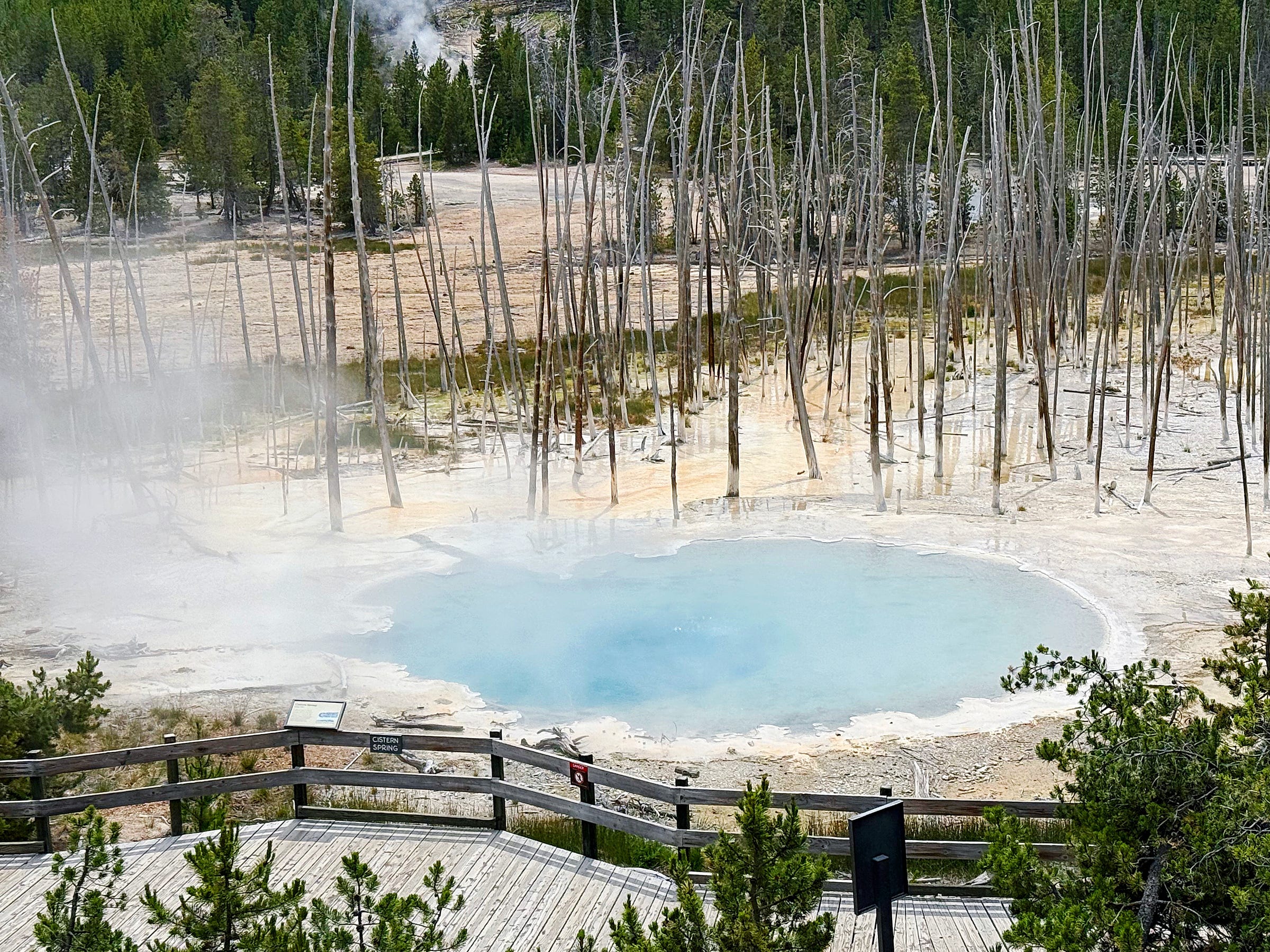


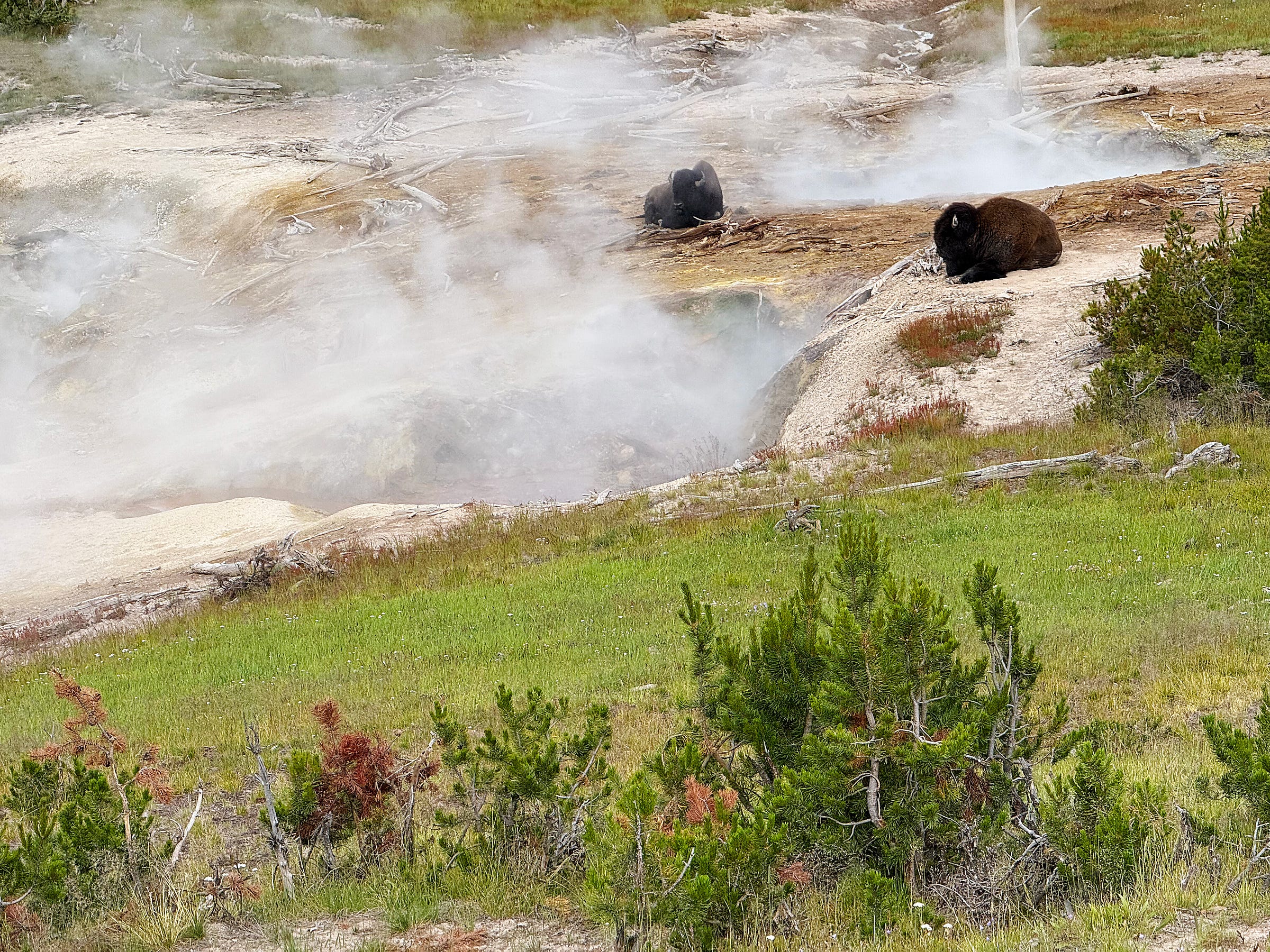


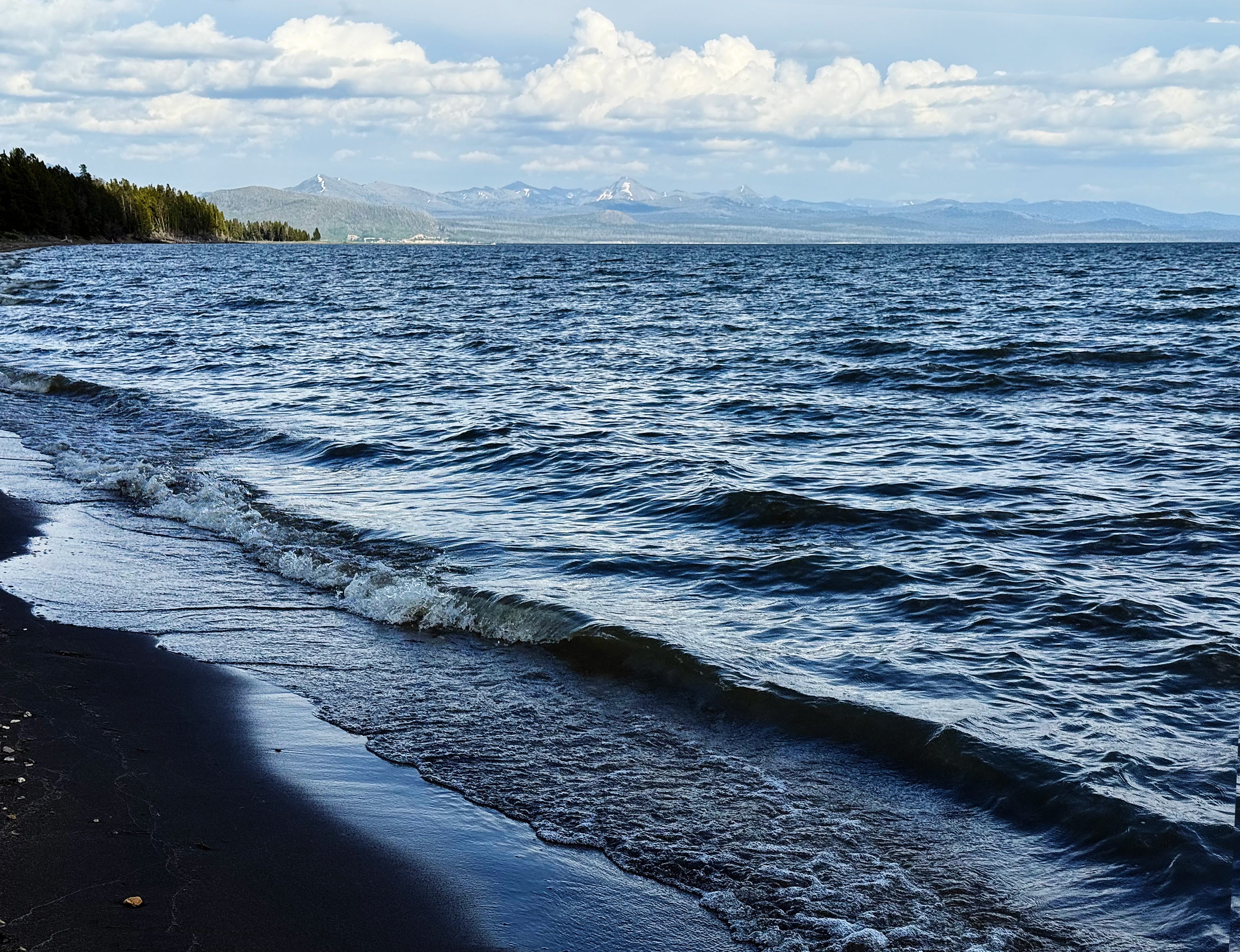

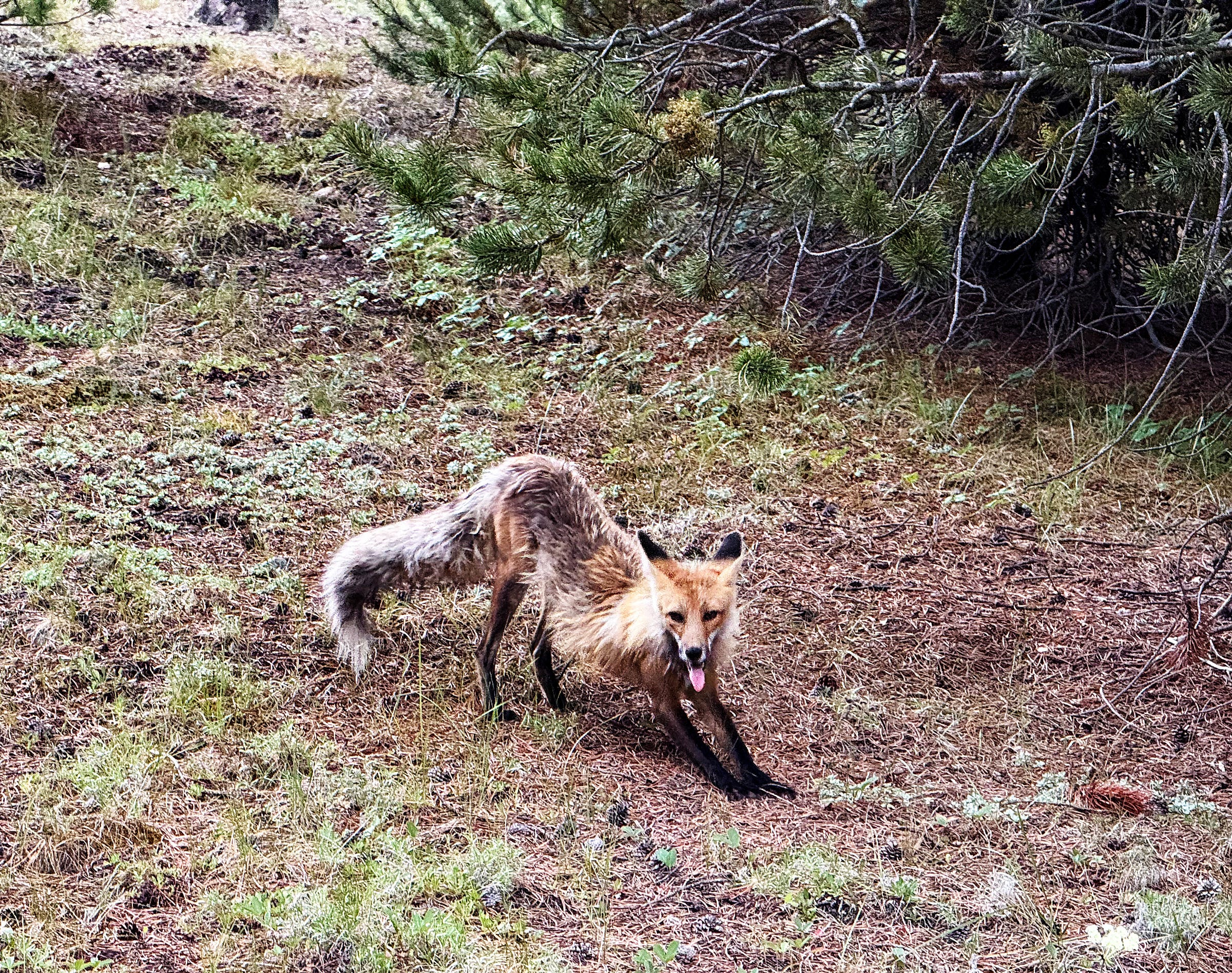

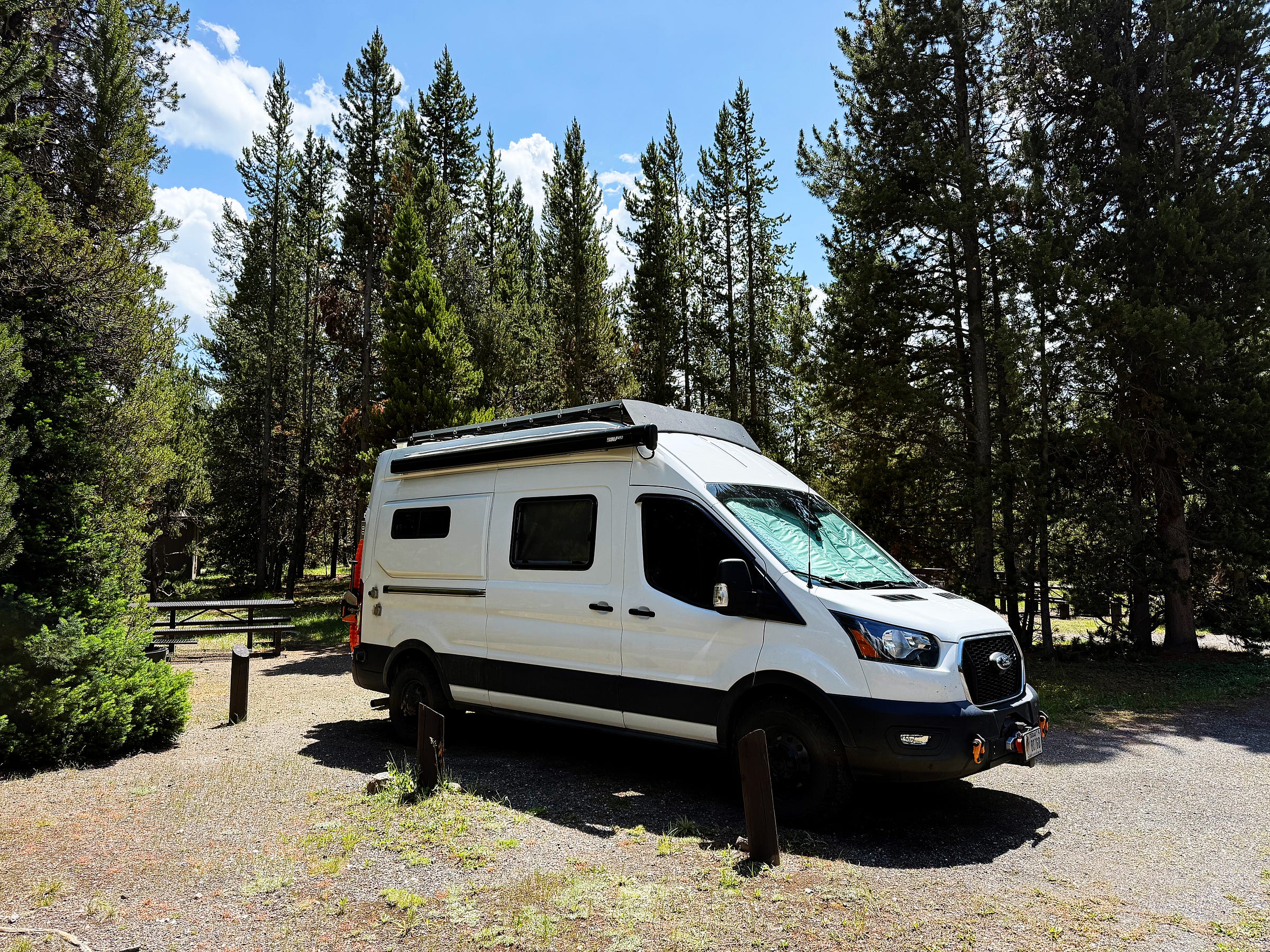
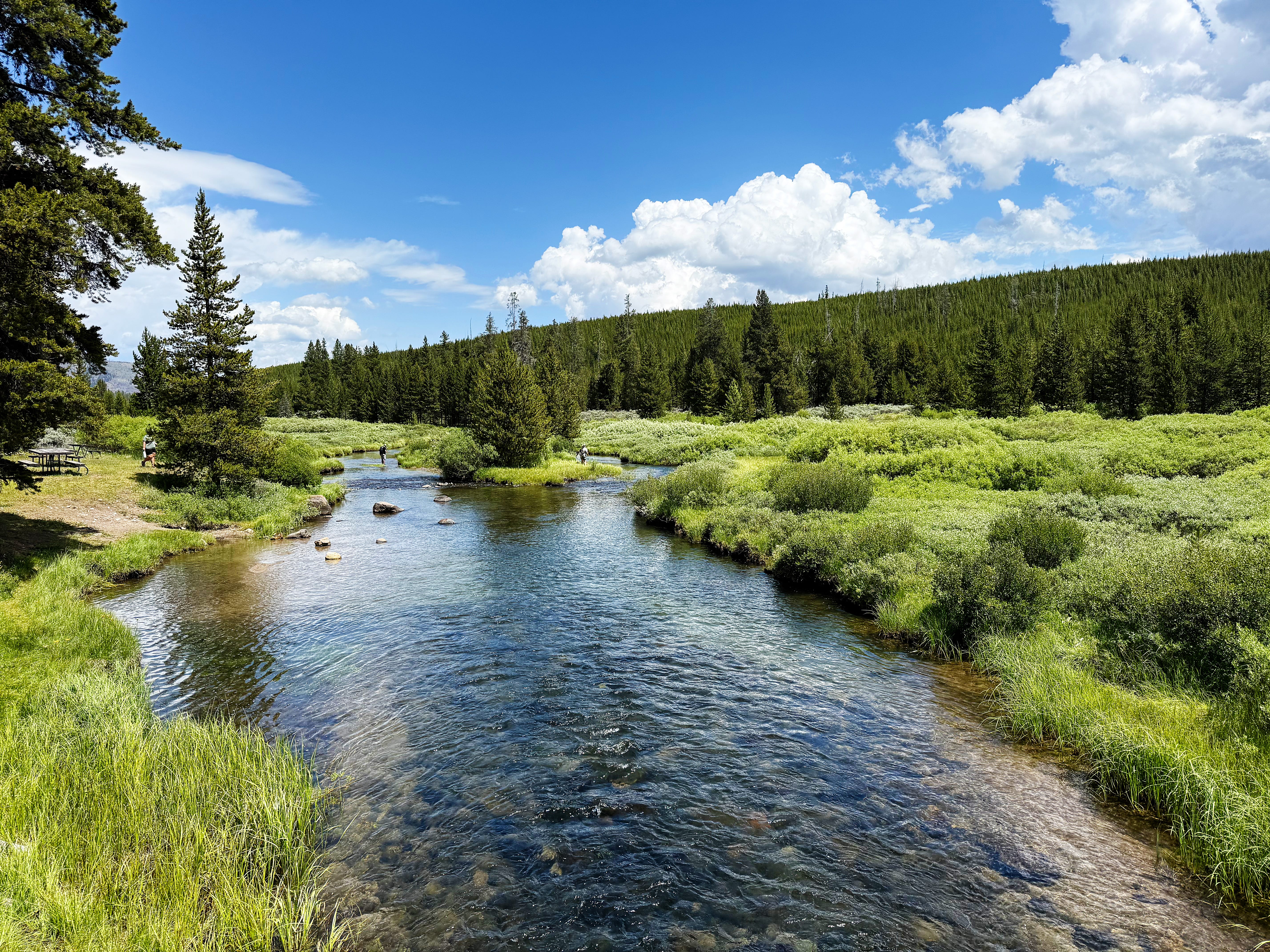
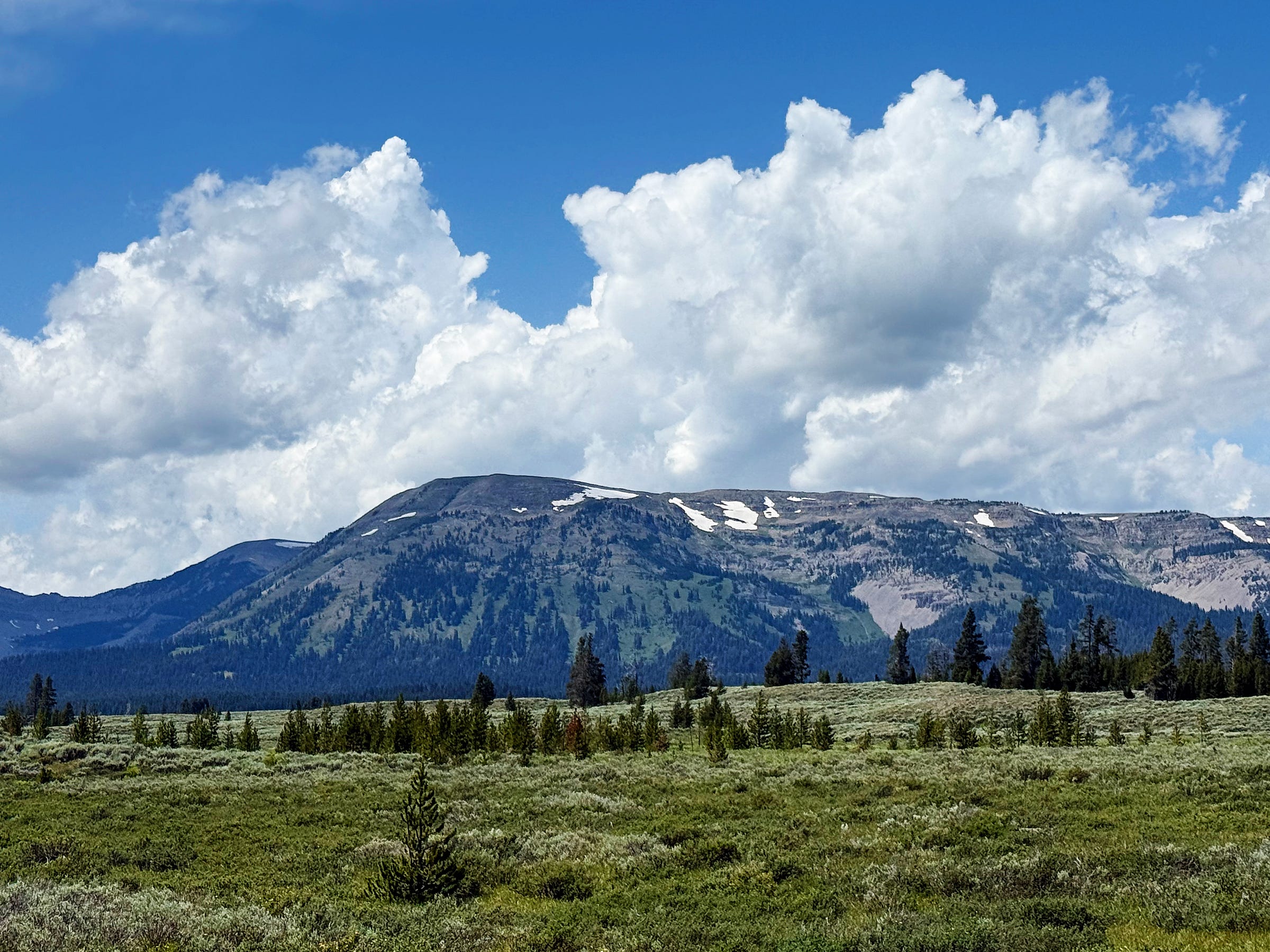
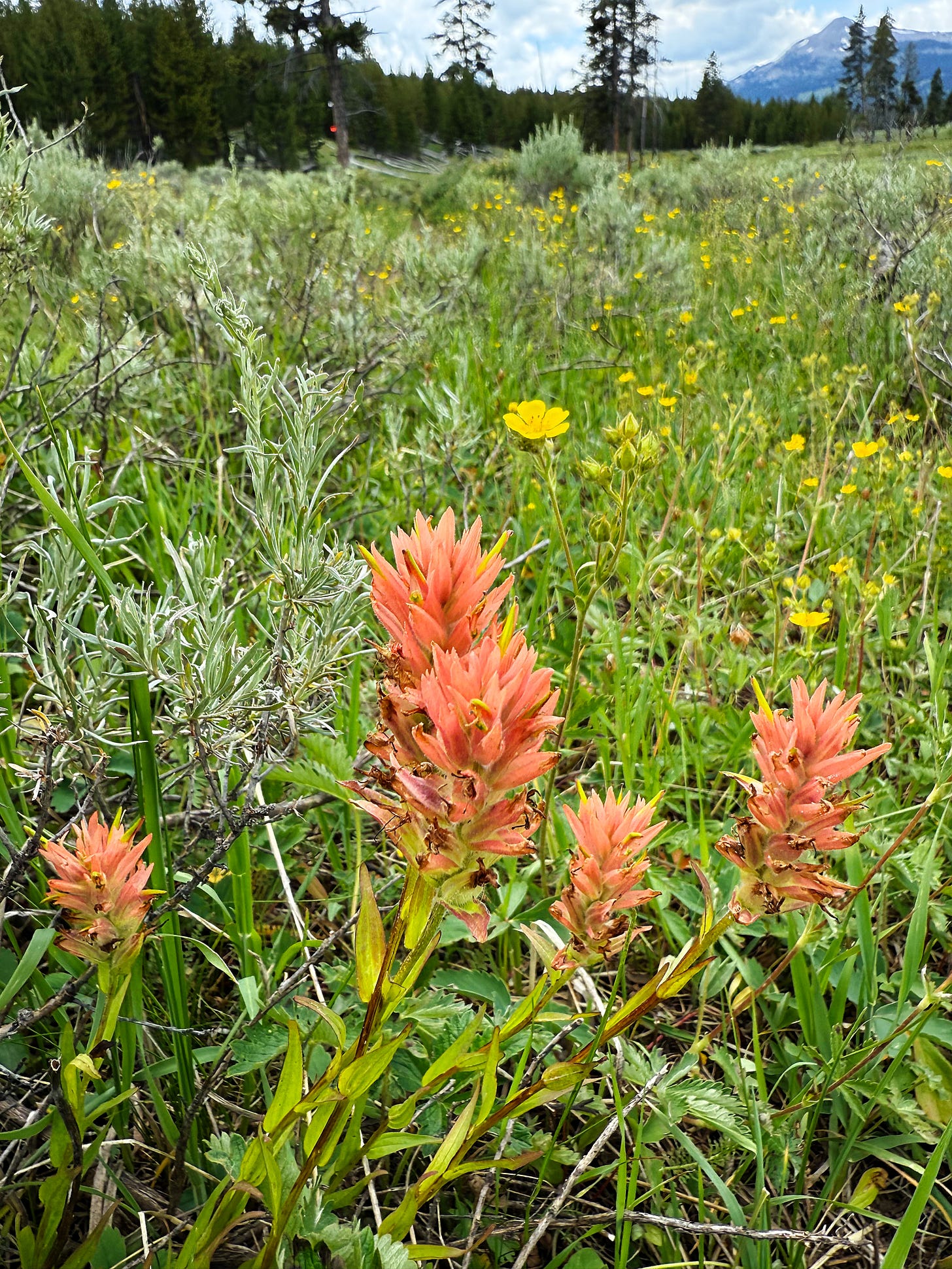
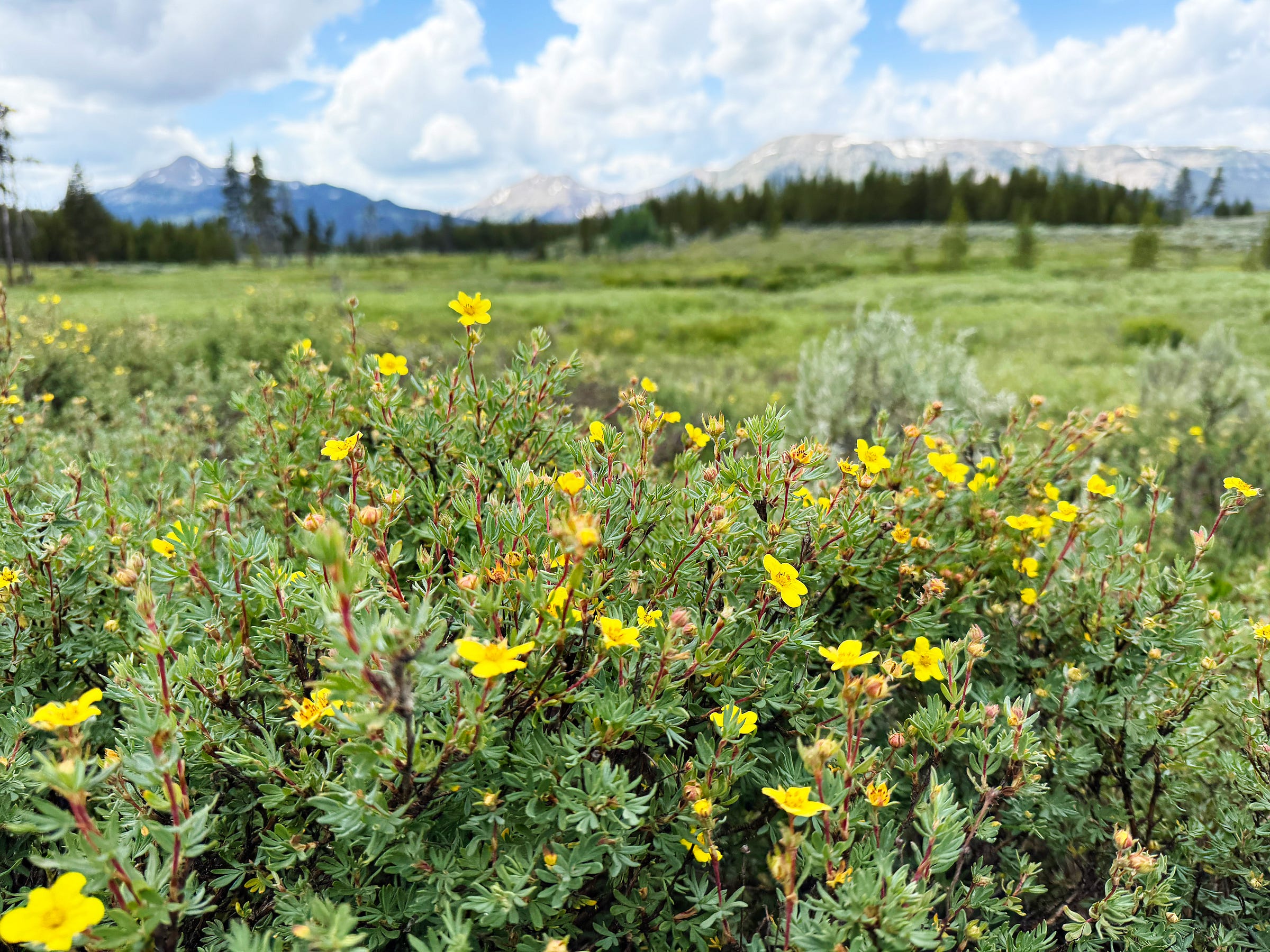
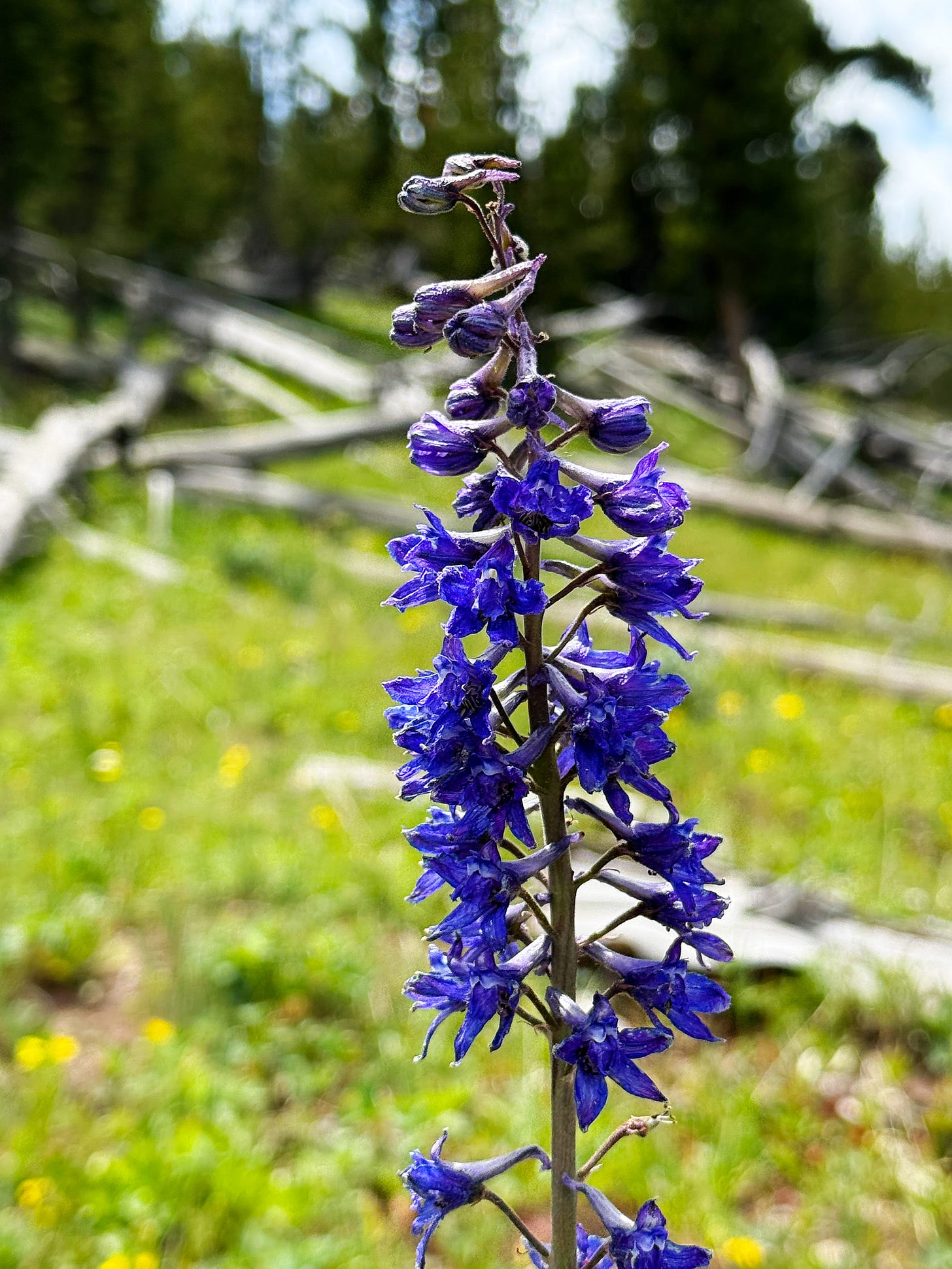
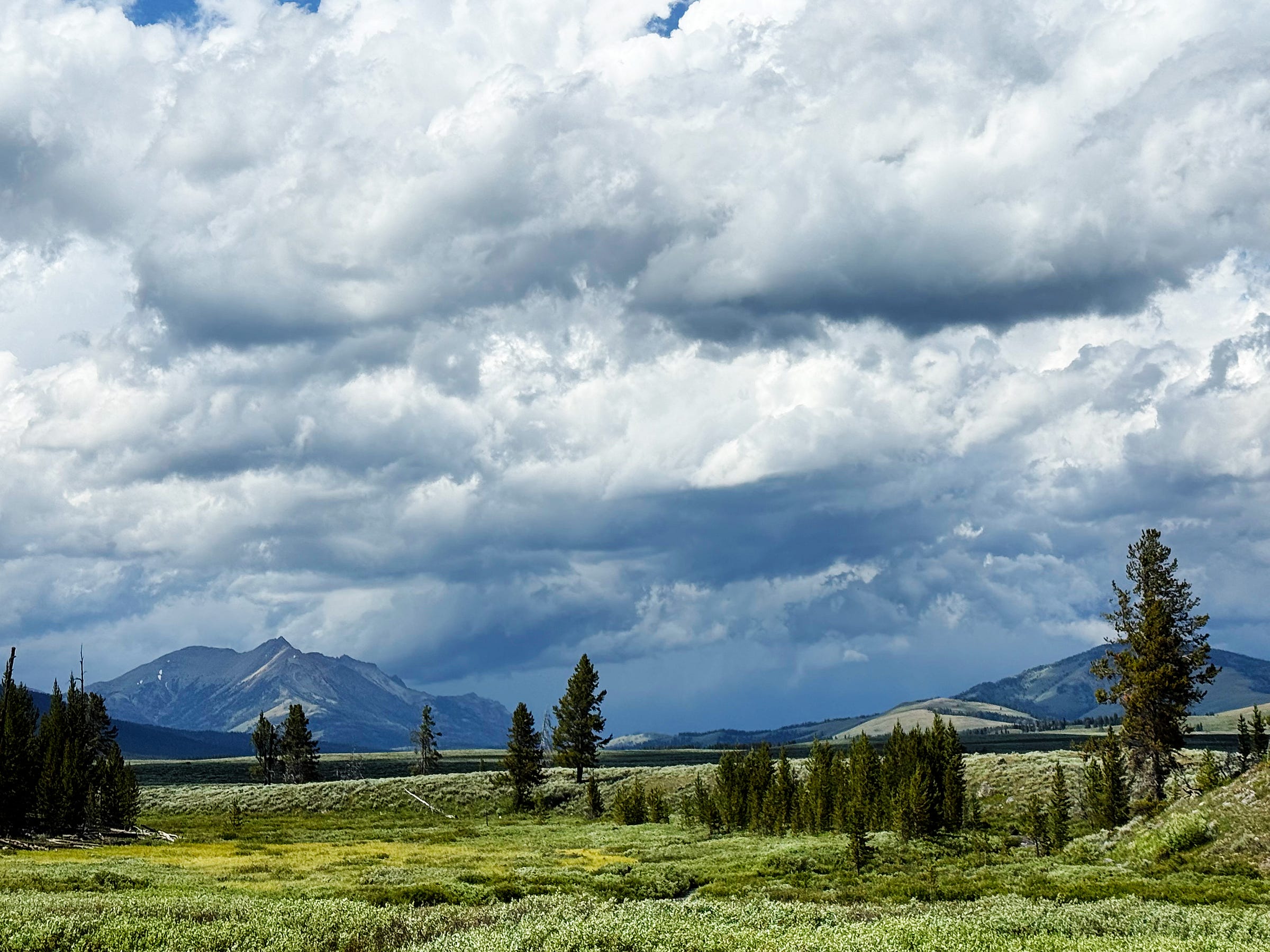


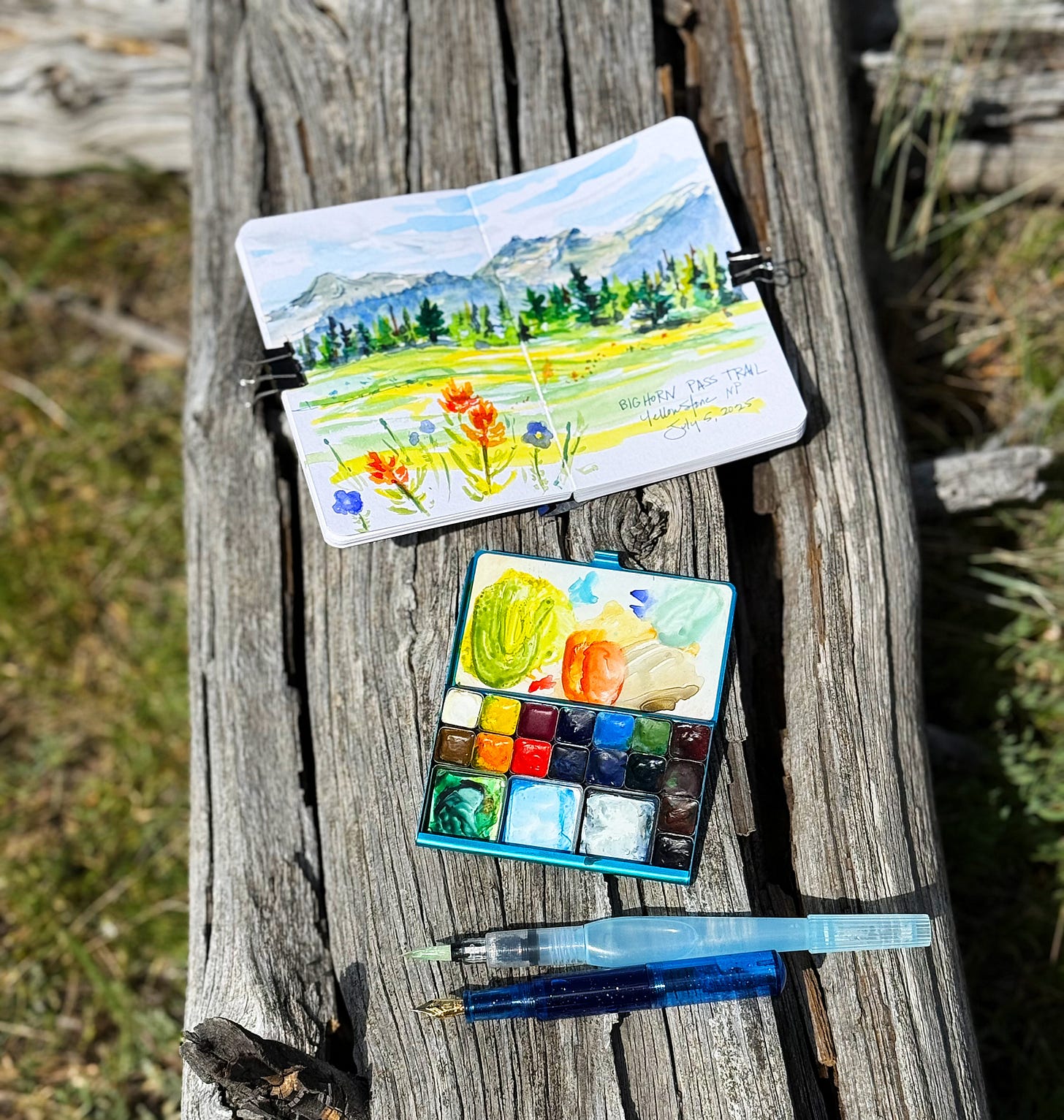
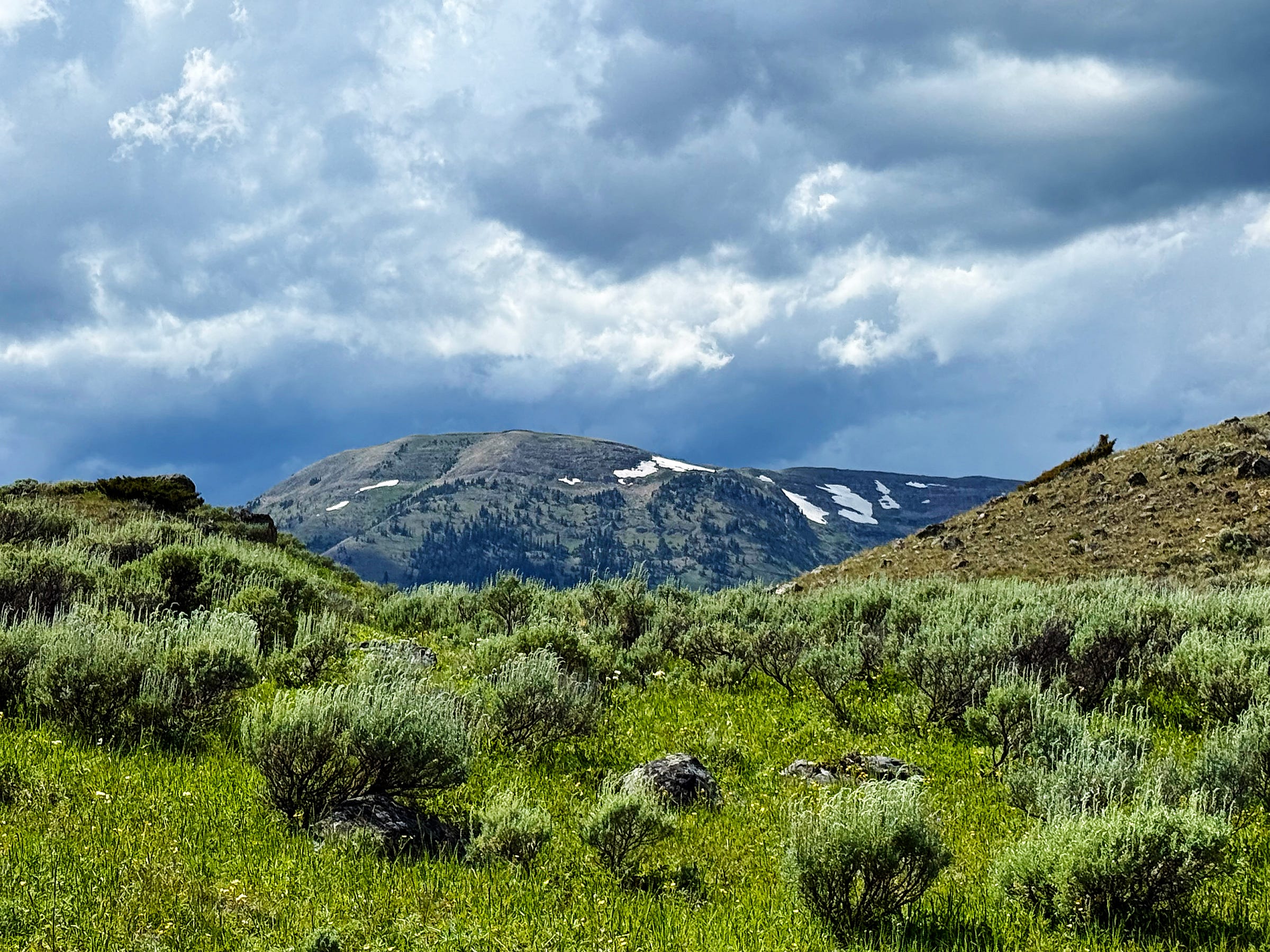
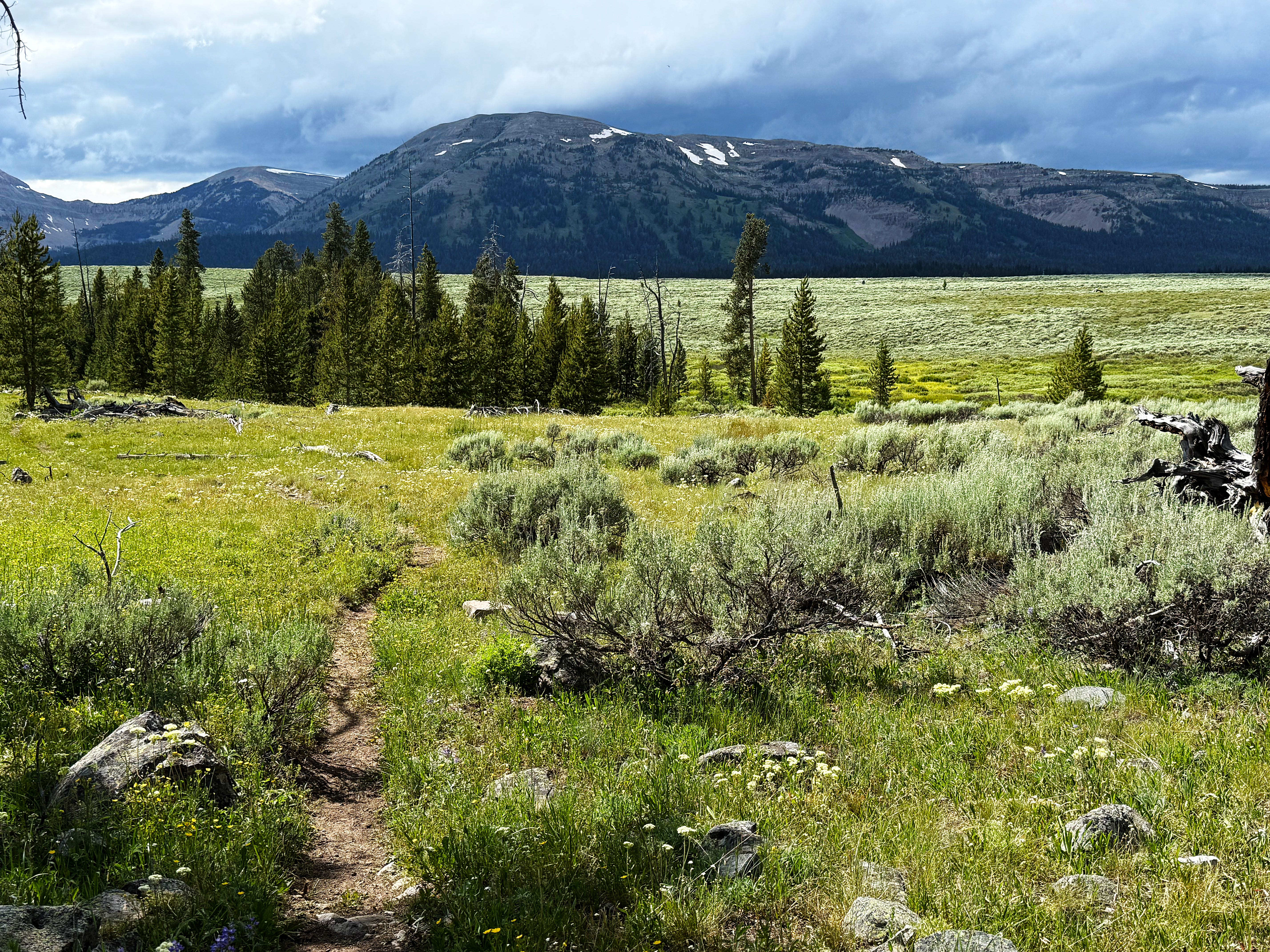
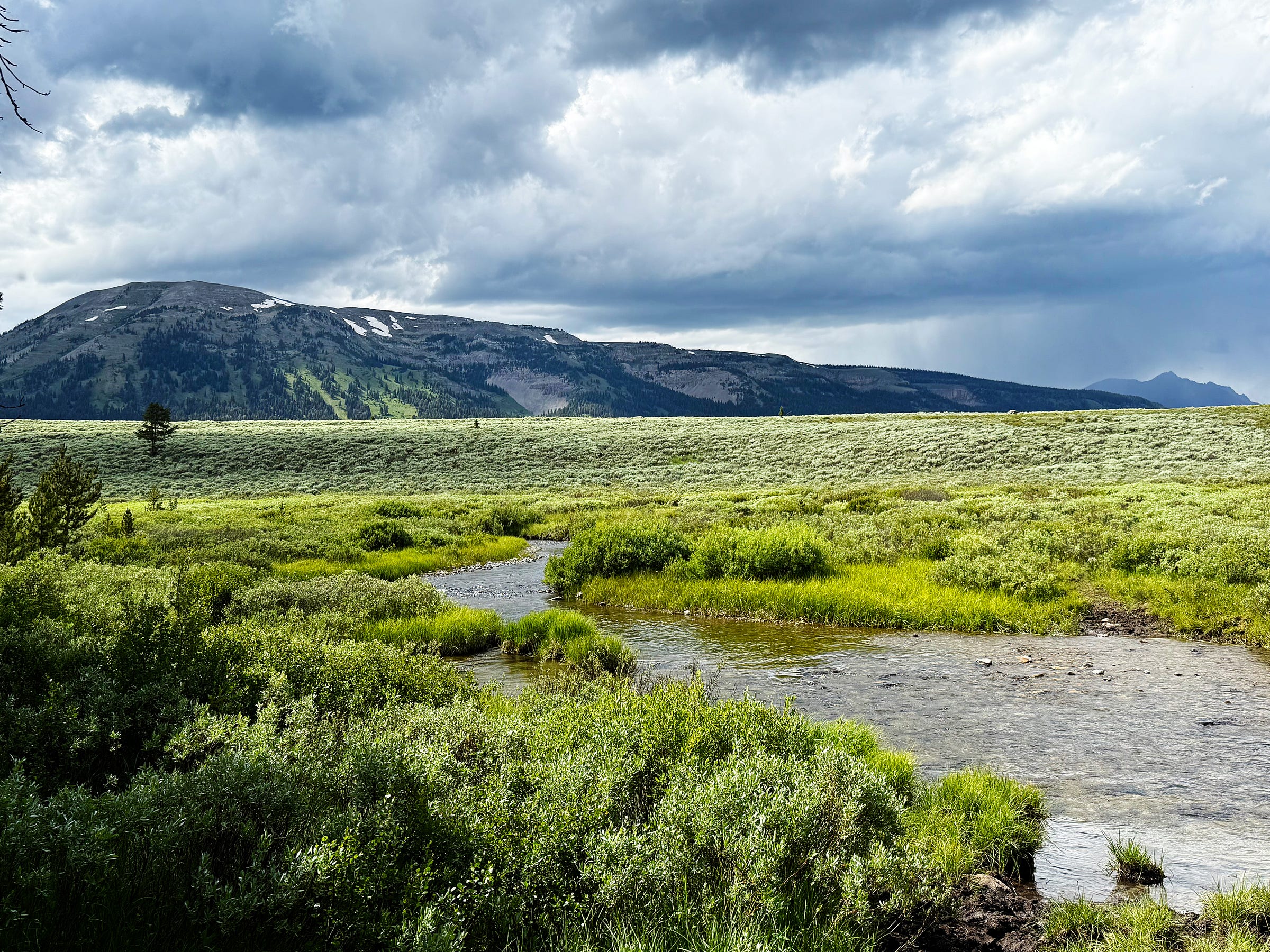
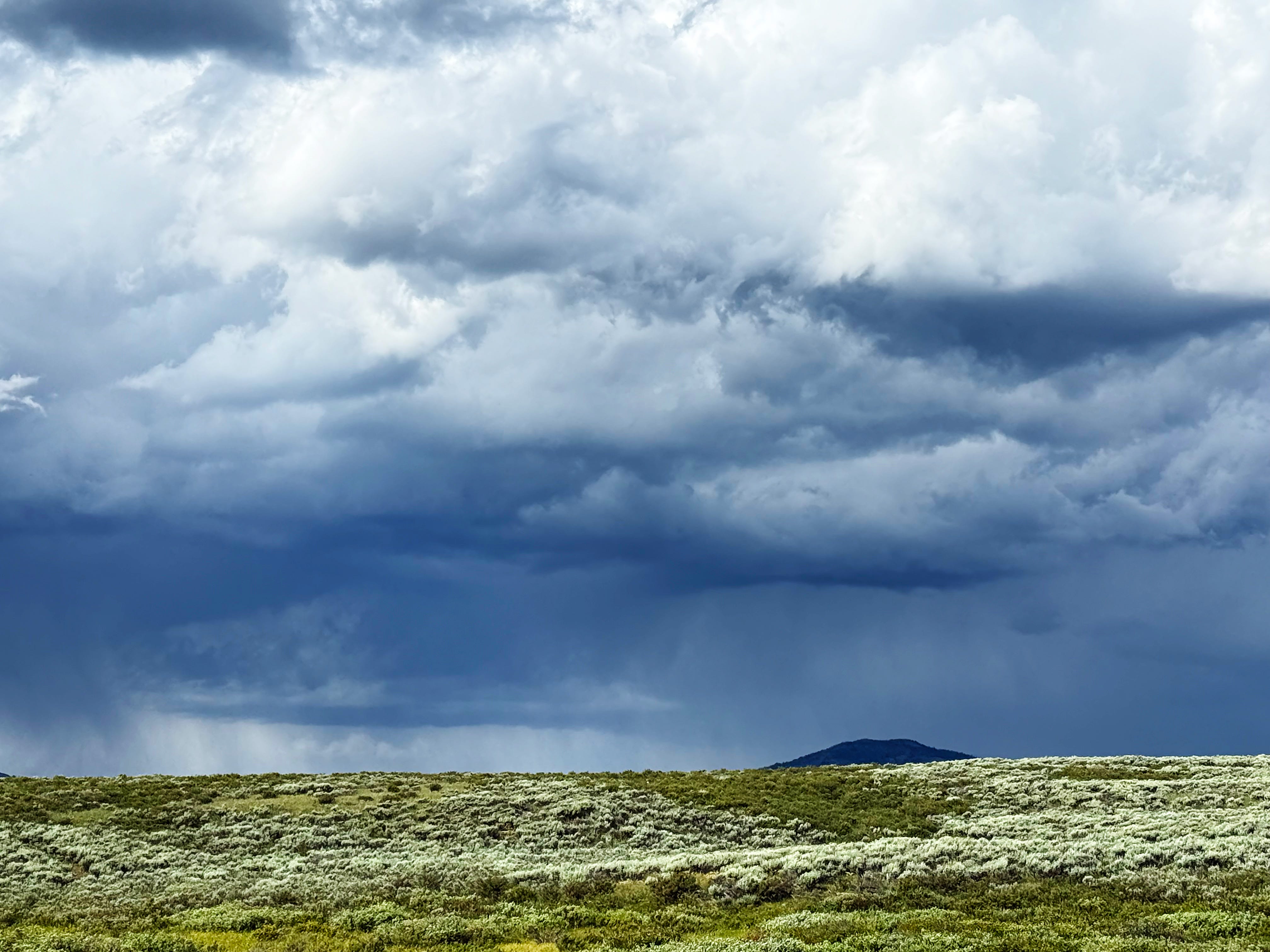
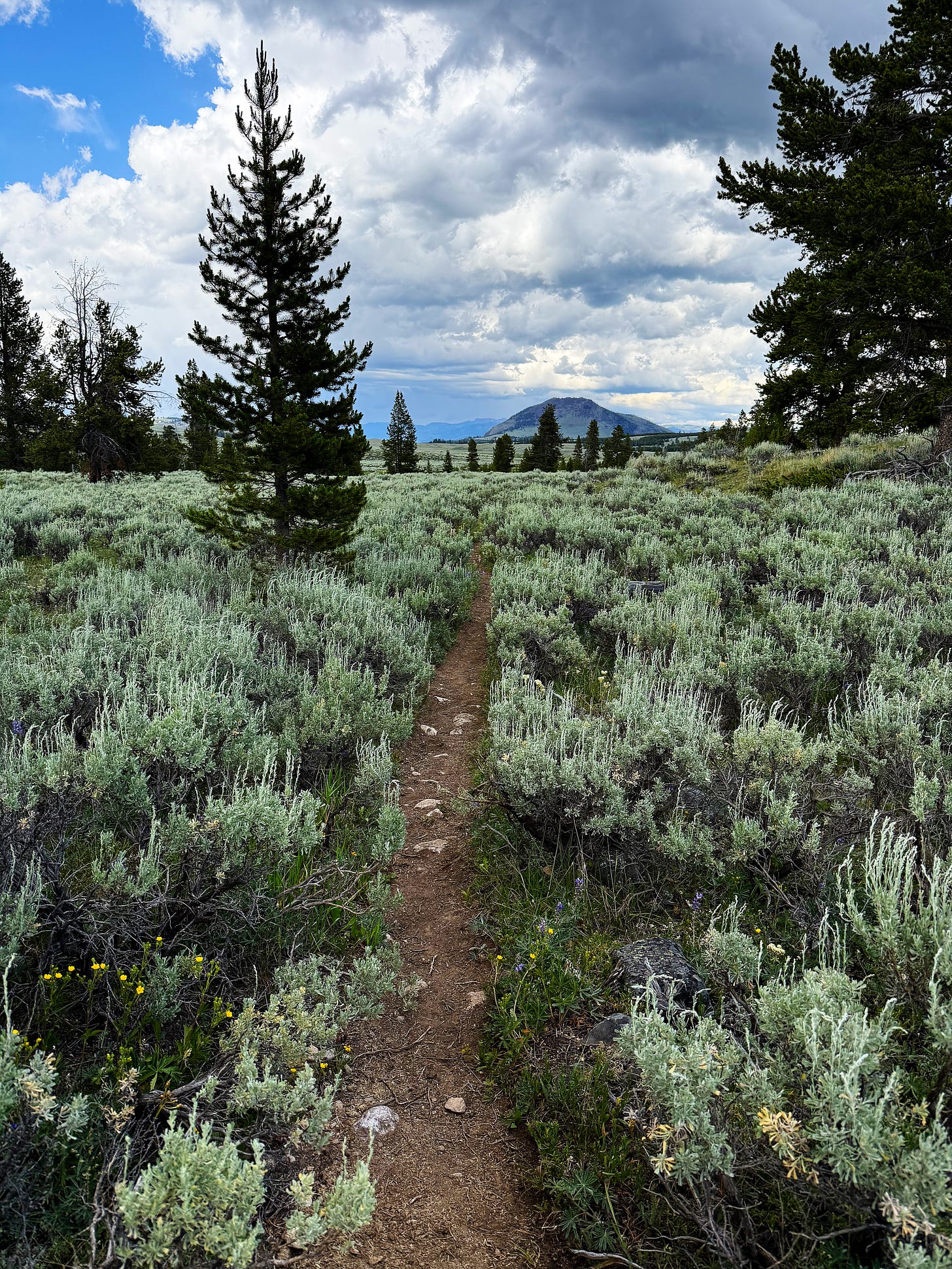


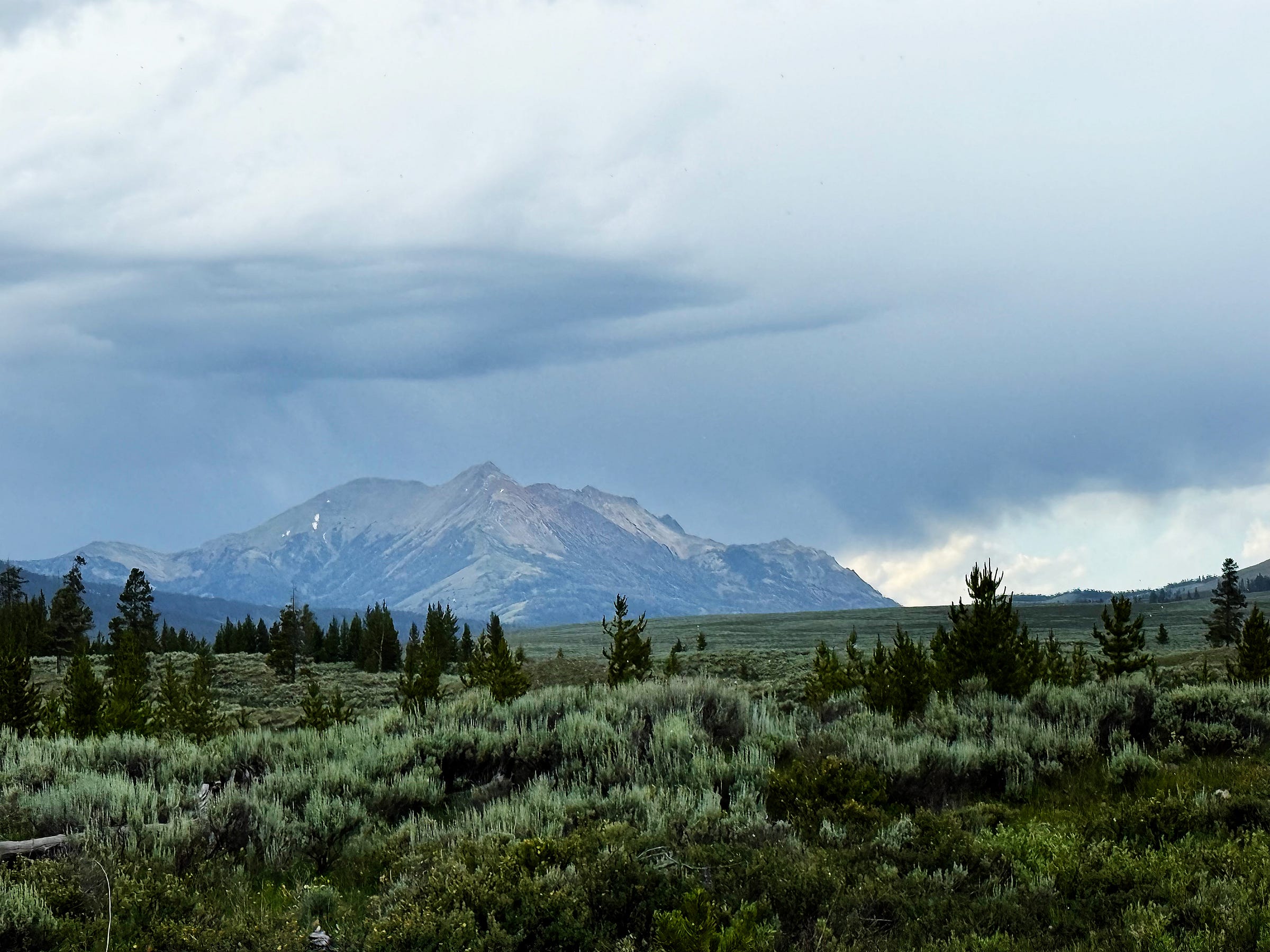

So now you've put out as many posts as Heinz traditionally claimed for pickles. According to AI:
The "57" on Heinz bottles, specifically the glass ketchup bottles, is a branding legacy from the early days of the company. In 1896, H.J. Heinz chose the number 57 for his "57 Varieties" slogan, even though the company already offered more than 60 products. He liked the number 57, finding it to be lucky and memorable, according to Heinz. It's not a count of the number of products, but rather a marketing strategy that stuck and is still used today. The "57" also serves as a designated spot on the bottle to tap for easier ketchup flow from the glass bottles, according to Heinz.
Fantastic advantures. Love the colours